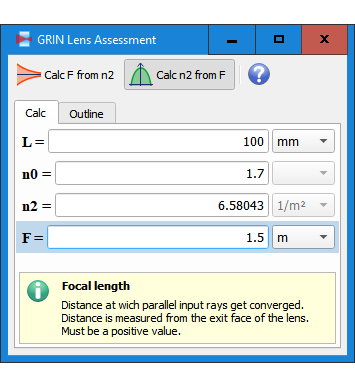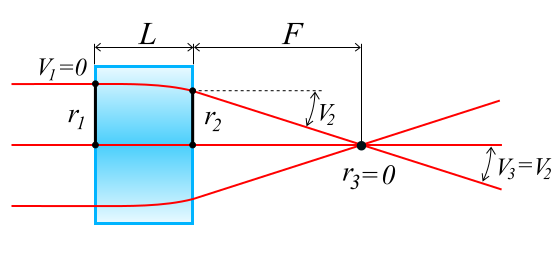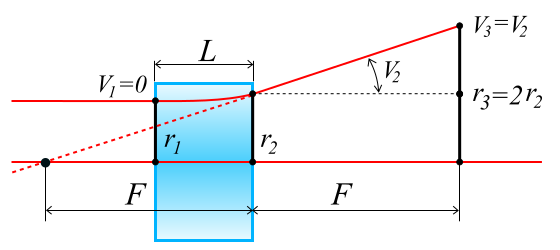GRIN Lens Assessment
The tool GRIN Lens Assessment allows for calculation of GRIN-lens focal range F from known length L, axial IOR n0, and gradient constant n2.
Or it’s possible to calculate gradient constant n2 from known focal range F, length L, and axial IOR n0. In any case, L and n0 are always input parameters.
Buttons on the toolbar define which of the values n2 or F calculated when we change one of L or n0.
Because n2 and F are free parameters here, then when one of them changes, the other is calculated independently on which button pressed on the toolbar.
Focus Range Assessment
A geometric approach used to estimate the focus range of the GRIN-lens. It’s done according to the book “Quantum Electronics” by A. Yariv, see chapter 6.4 “Rays in lenslike media” (there is no exact algorithm there but the final formula is given).
We have a GRIN Lens and a parallel input ray (r1, V1) entering it. Then an output ray (r2, V2) can be calculated with ray vector transformation formula:
Then similarly, we can express the ray (r3, V3) from the ray (r2, V2) and matrix of the free space:
Then combining these two expressions and solving against F, we can get the final formula:
Negative lens
In a similar way we can get the focal length of negative thermal lens:
It can be seen from the figure that vector radius r3 is doubled after passing the focal length:
So combining these two expressions and solving against F, we get a formula which is quite similar to that of positive lens:
Gradient Constant Assessment
There is no such simple formula for gradient index n2, so it’s computed via numerical solution of the above formula against n2 having known F, L, and n0.









